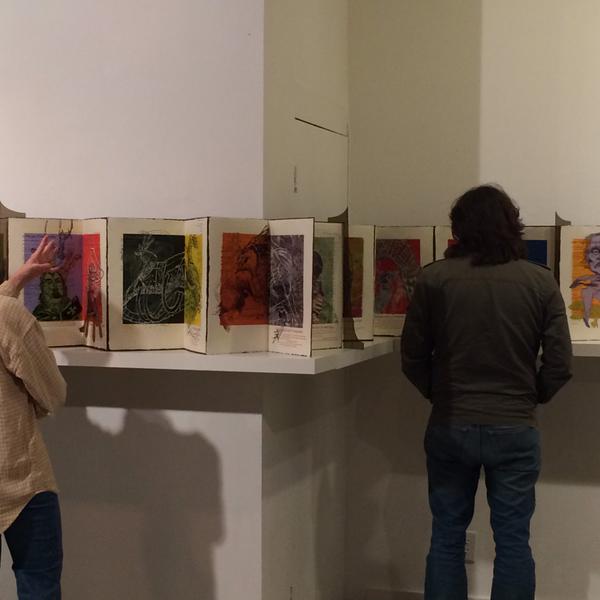Over the weekend I attended a fantastic reading by Felicia Rice for an exhibition at the Galería de la Raza. Her latest piece is a book installation, Doc/Undoc, a collaboration with Guillermo Gómez-Peña, Jennifer González, Gustavo Vazquez, and Zachary Watkins. In addition to reading from the piece, Rice spoke about the art of printing books, emphasizing that to her, the art is not just the finished product but the act of printing: operating presses, typesetting by hand, layering ink colors to get the right shades.
To me the most important takeaway was a comment Rice made in passing: “obsolete technologies eventually become art.” Rice’s art is making books.
The care and talent evident in the printing of her books is unlike anything I’ve seen and a far cry from the soulless monotony of most of the paperbacks I’ve read lately, all printed with the same layout. The words are different, but the presentation is always the same: expected, familiar, boring. But Rice is operating under a different set of considerations than those printers. Those printers care about churning out copies as quickly as possible; they care about numbers sold and releases and runs; they care about shipping on time to an audience who will pay.
Rice doesn’t care about those things. Doc/Undoc took 7 years to complete. There is a run of only 65 original copies, and for Rice the very process of printing, of performance, has helped her confront fears and process difficult emotions. The act of creation itself is the art, and the process is fascinating because printing presses are an obsolete technology—not in spite of it.
With the recent release of some 2400 DOS games by the Internet Archive, everyone wants to talk about the obsolesce of games.
“Video games are more prone that other media to obsolescence,” writes Simon Parkin for the New Yorker. And perhaps this obsolescence is the very thing that drives the art games movement—in a way that goes beyond just influencing its visual aesthetic. The games industry has long cashed in on nostalgia and the cycles of the popularity of “retro.”
Perhaps these cycles are also a way of reconciling where games fit into a maturing dialogue with the art world.


